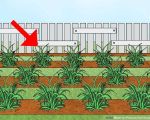
My Experience with Lawn Dethatching and Why It Saved My Yard
When I first moved into my suburban home in Illinois, I had no idea how much work a lawn required. I thought mowing and watering were enough. That was until I noticed my grass turning patchy and dull, no matter how much care I gave it. After some digging (and a few conversations with neighbors), I discovered the concept of lawn dethatching. That’s when everything changed.
1. What Is Lawn Dethatching?
Lawn dethatching is the process of removing the thick layer of organic matter—called thatch—that builds up between the grass blades and the soil surface. Thatch consists of dead grass, roots, and debris. While a small amount of thatch (about half an inch) is beneficial, anything more than that can suffocate your lawn.
Imagine trying to breathe through a blanket. That’s what your grass goes through when thatch builds up. It blocks air, water, and nutrients from reaching the soil, essentially starving your lawn. I learned that the hard way after wasting months wondering why my grass looked dead despite regular watering.
2. Why Dethatching Matters for American Lawns
If you live in the U.S., particularly in states with seasonal weather like Illinois, Ohio, or Pennsylvania, dethatching isn’t just helpful—it’s necessary. Our climate leads to heavy grass growth in spring and summer, followed by layers of dead organic material settling in fall. Over time, it creates a dense mat that can kill your lawn if left untouched.
Here’s what happened to me: one spring, I noticed rainwater pooling on the surface of my yard instead of soaking in. The grass felt spongey underfoot, like walking on a wet carpet. After a professional inspection, I found over an inch of thatch choking the soil. No fertilizer or irrigation would help until I dethatched it.
2.1 Common Signs You Need to Dethatch
- Your grass feels springy or spongy when you walk on it
- Water pools on the surface instead of soaking in
- Your lawn looks thin, even with regular watering and feeding
- Grass roots are shallow, easily pulled from the soil
Recognizing these symptoms early can save you hundreds in reseeding or sod replacement.
3. How to Dethatch Your Lawn the Right Way
Once I knew the problem, I got to work. There are three main methods of dethatching:
3.1 Manual Dethatching
This involves using a dethatching rake, which looks like a regular rake with sharp tines. It’s affordable and effective for small yards. I started with this method in my front yard. It was hard work—my arms were sore for days—but the results were instant. I could see the thatch coming up like clumps of straw.
3.2 Mechanical Dethatching
For larger lawns, a power dethatcher or verticutter is ideal. I rented one from a local hardware store for my backyard. It was noisy and powerful, tearing through the thatch like a lawnmower on steroids. If your thatch is thick or your yard is over 5,000 square feet, this method is a lifesaver.
3.3 Hiring a Professional
Some homeowners prefer hiring lawn care professionals. I did this the following year to save time. Services like those on Lawn Care Services helped me find affordable and trusted pros nearby. It cost more, but my lawn looked better than ever—thicker, greener, and more resilient to drought.
4. When to Dethatch Your Lawn
Timing is everything. Cool-season grasses (like fescue or bluegrass) should be dethatched in early spring or early fall. Warm-season grasses (like Bermuda or Zoysia) do best in late spring or early summer. I dethatched in early April, just as the grass began actively growing. It bounced back quickly and looked lush within weeks.
Avoid dethatching in the heat of summer or during dormancy. It’s stressful on the lawn and can do more harm than good.
5. Aftercare: What to Do After Dethatching
Post-dethatching care is crucial. I made sure to:
- Water deeply: to help the roots recover
- Aerate: to loosen compacted soil and encourage deep root growth
- Fertilize: using a balanced lawn food for quick regrowth
- Overseed: in patchy areas to promote a fuller lawn
This full approach turned my sad-looking grass into a lawn worth showing off. Neighbors even asked what I did, and I was more than happy to walk them through it.
6. Lessons I’ve Learned from Years of Dethatching
Dethatching isn’t just a one-time fix—it’s part of an ongoing lawn care routine. I now check thatch levels every spring and dethatch when needed (about every 2–3 years). My yard has become healthier, thicker, and more resistant to disease and drought.
If you’re serious about having a lawn that turns heads, start with dethatching. It’s not glamorous, but it’s powerful. Trust me—I’ve lived it.
Looking for help with your lawn? Visit Lawn Care Services for the best local lawn dethatching and maintenance professionals in your area.








